








The magazine of the photo-essay

Oct back 2016 issue


by Mikel Landa and Luke Duggleby
.
“A free, really high quality photo-essay magazine. Fabulous!”
Stephen Fry. British actor, writer and film & documentary maker



Taken for granted in modern times salt remains one of the most important
minerals for human survival. Our bodies demand it.
Since we walked this earth humans have searched out salt and for
millennia the control of a salt source and its trade provided empires with
power and wealth. And why? Because before the development of
refrigeration, salt was vital in preserving food and, of course, making food
taste better. Without salt to preserve meat or fish, early explorers and
sailors would have had a much harder time during their travels.
Throughout history local people have developed some ingenious and
sometimes bizarre ways of extracting salt and this fact alone formed the
basis of this book. In remote regions throughout the world, on isolated
islands, hidden in remote valleys or high up on mountainous plateaus,
people still use the methods of old to produce this vital mineral.
Salz der Erde is the result of 5 years of work and collaboration between architect Mikel Landa and photographer Luke
Duggleby. The aim was to document and illustrate some of the worlds most unique and special traditional salt producing
places. Covering 29 places in total, which were divided in two between Luke and Mikel, on four continents they aimed to
show the sheer diversity of salt production and the communities that still rely on it for their livelihoods.
But modernization has led to many saltworks being abdandoned in industrialized countries, a process that is slowly
reaching every traditional saltworks even those in remote regions. Cheap low-quality factory salt has flooded the market
and as a result the demand for labour intensive traditional salt, despite its superior quality, declined.
However, there is one factor that could save these disappearing traditional salt making sites and that is quality. H
andmade salt is vastly superior in quality and it is this fact that has lead to the preservation and renewal of several sites
across Europe and America. It is of this fact that the authors want to remind the reader so that we can help preserve
those sites that still remain.
This comprehensive history of salt production was published in German in a large format book by German publisher
mareVerlag .
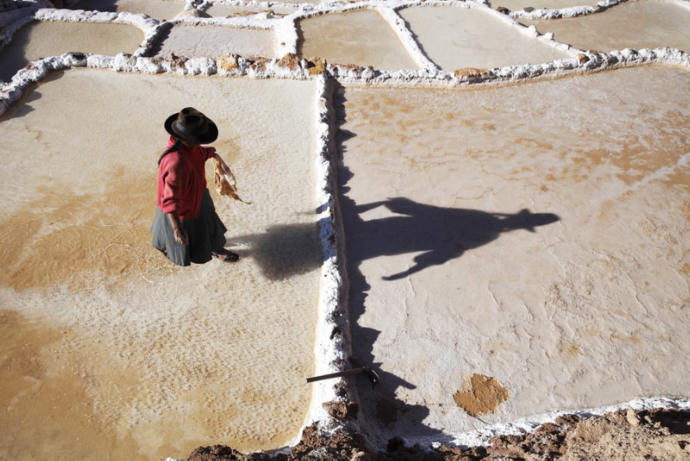
A Quechuan lady walks across the ancient salt pans on Salinas de Maras casting a long shadow. Built by the Inca's this
UNESCO site is still used to produce salt by members of the Maras community. Maras, Peru. Photo: Luke Duggleby.
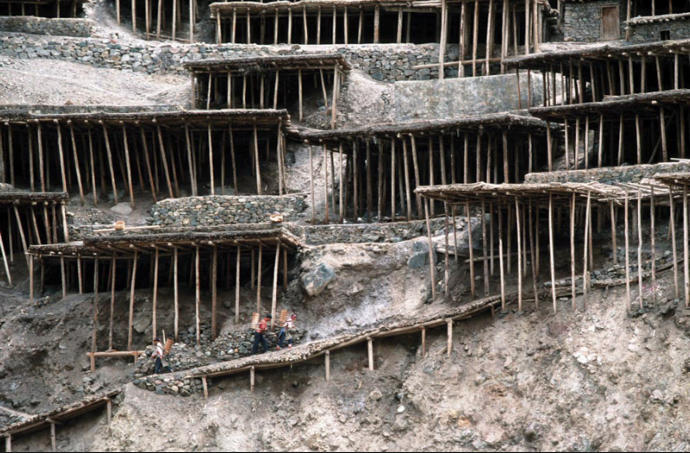
The ancient salt making terraces of Yanjing in Eastern Tibet. Located just above the River Mekong as it flows down
from the Tibetan plateau these terraces have been used to make salt for many centuries. The salt water comes from an
underground source below the Mekong. Yanjing, China. Photo by Luke Duggleby.
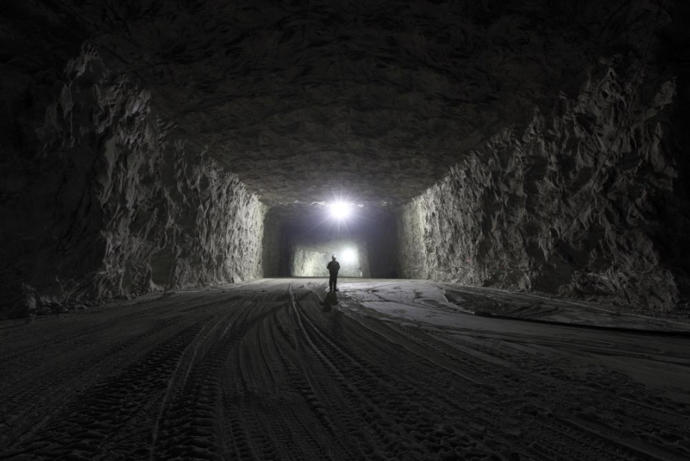
A Romanian miner stands in the vast cavern of the Mihai Mine. Everything you see is made of salt. Slanic, Romania.
Photo by Luke Duggleby.
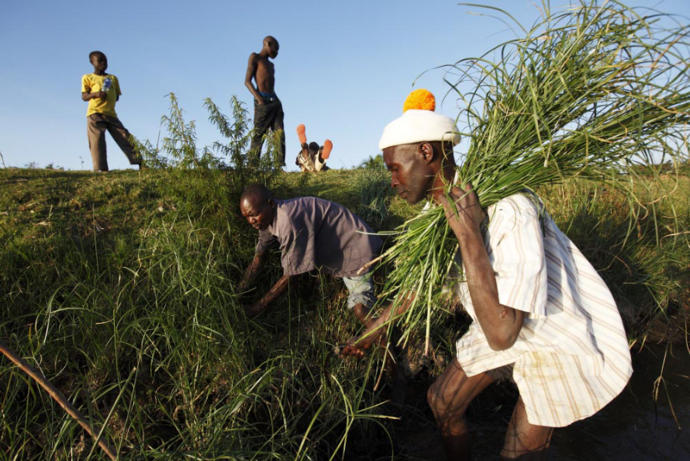
Salt makers collect a special river reed on the banks of the Nzoia River in Eastern Kenya where they produce salt from
it by drying it, burning it and filtering its ashes with water. Webuye, Kenya. Photo by Luke Duggleby.
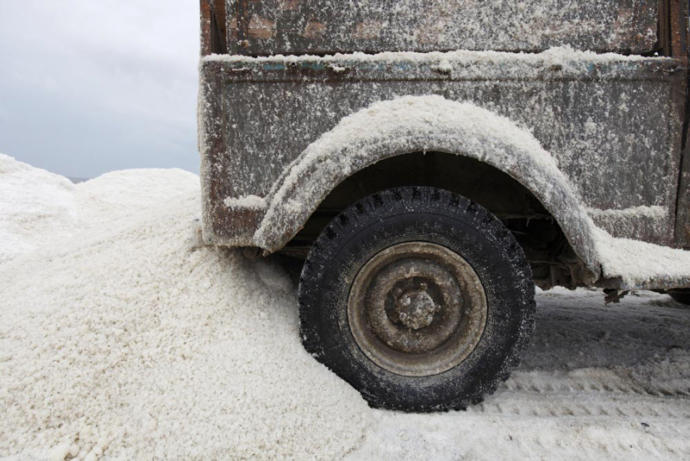
An old Soviet-era truck is used to transport salt from Binagadi Lake, a large salt lake close to the town of Masazir in
Azerbaijan. Photo by Luke Duggleby.
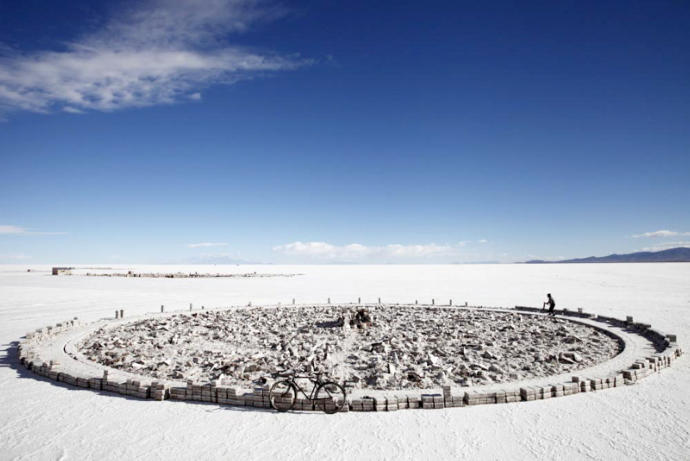
A salt maker cuts salt blocks directly from the world's largest salt deposit in a circular formation. The Salar de Uyuni in
Bolivia is the world's largest salt deposit. Photo by Luke Duggleby.
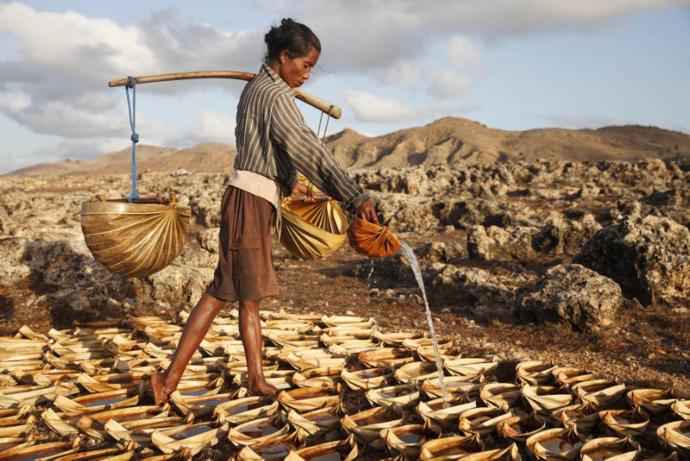
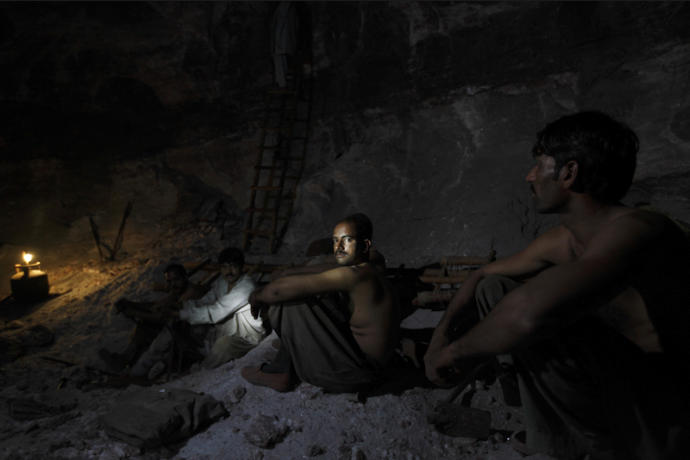
A salt miner in Pakistan’s Khewra mine takes a break in the darkness. Punjab, Pakistan. Photo by Luke Duggleby.
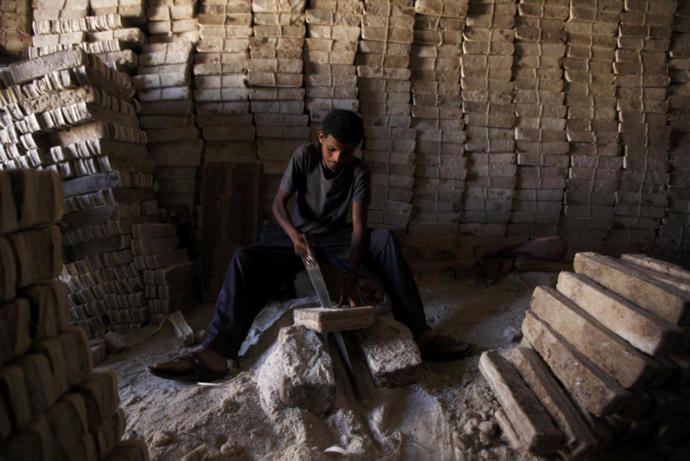
In a shop that sells salt bricks brought by camel from the Danakil Depression uses a saw to cut them in to smaller
pieces. Tigray, Ethiopia. Photo by Luke Duggleby.

Salt workers literally cut the salt from the ground in the Danakil Depression. The depression is the lowest and hottest
inhabited place on our planet and workers must work in very high temperatures with no cover. Afar, Ethiopia. Photo by
Luke Duggleby.
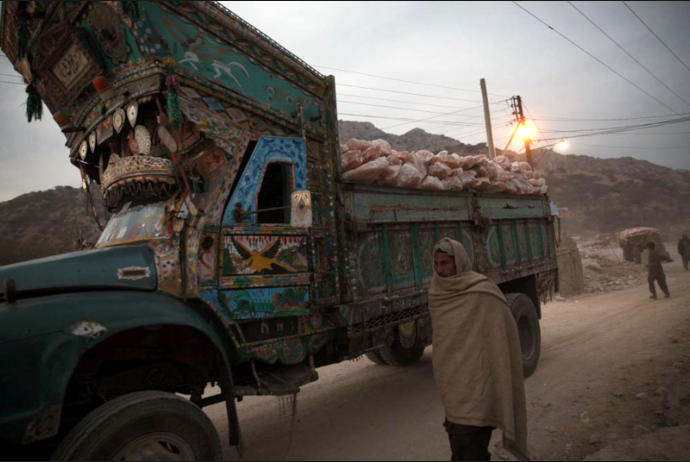
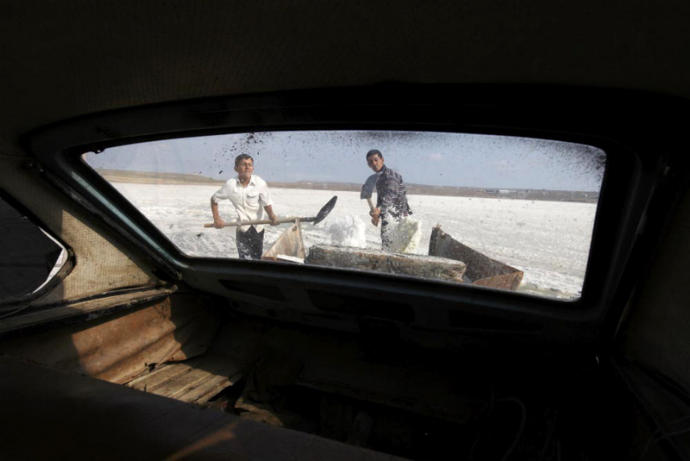
Two brothers load salt from Lake Binagadi in to a trailer attached to the back of a rusty Soviet-era car in Azerbaijan.
Photo by Luke Duggleby.
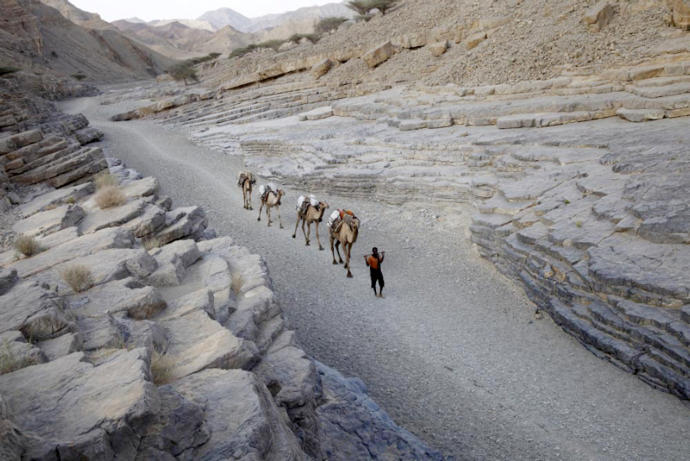
Salt traders walk their camels along the ancient salt caravan from the Danakil Depression to the town of Berhaile. Afar,
Ethiopia. Photo by Luke Duggleby
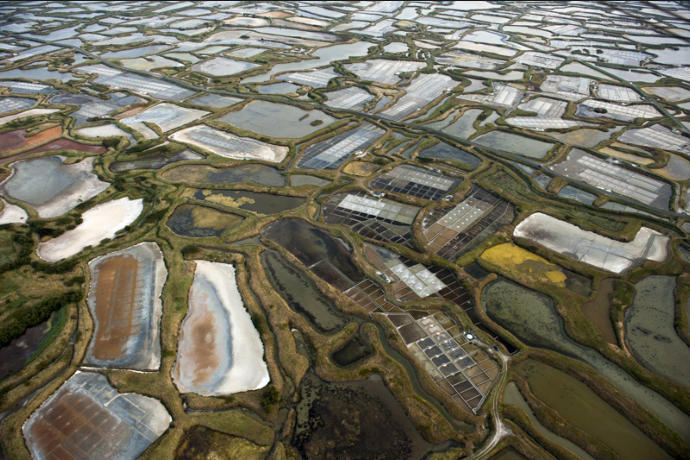
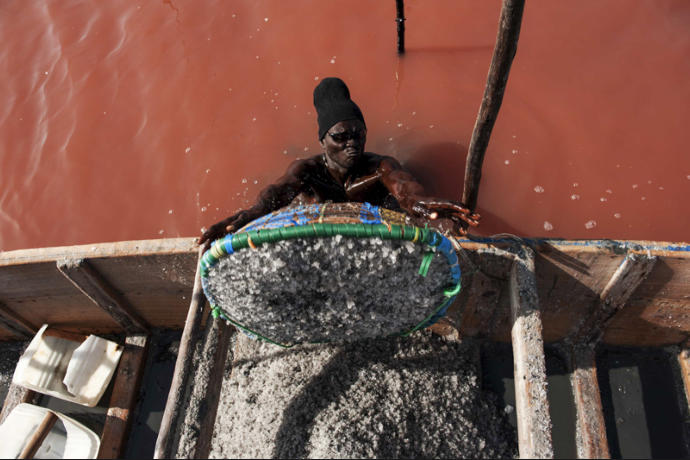
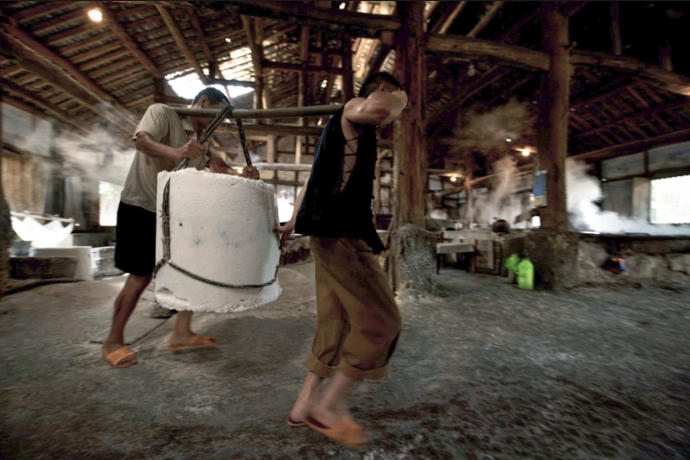
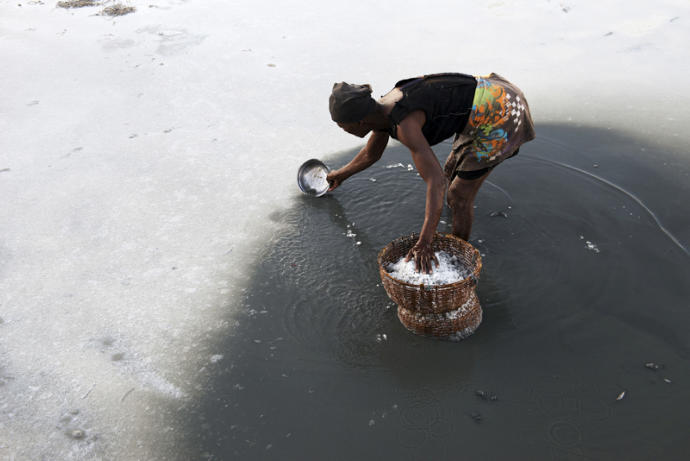

An aerial view of the ancient salt making pans in Guerande, Southern France. Photo by Mikel Landa.
A salt worker empties a basket of salt that he has just retrieved from the depths of Lac Rose, Senegal.
Photo by Mikel Landa.
Salt makers carry a large freshly made cylinder of compacted salt at the old salt factory of Zigong. Sichuan Province,
China. Photo: Mikel Landa
A women removes the salt that has formed on the surface of her families salt pan. Anse Rouge, Haiti.
Photo by Mikel Landa.
A women pours sea water into hundreds of tiny salt making 'containers' made of the leaf of the sugar palm tree cover
the beach in Eastern Indonesia. Photo by Luke Duggleby.
A truck laden with pink rock salt leaves the Warcha salt mine in Punjab Province, Pakistan. Photo by Luke Duggleby
A salt makers having just emptied sea water in to boiling vats leaves the room to refill in Noto, Japan.
Photo by Mikel Landa.






